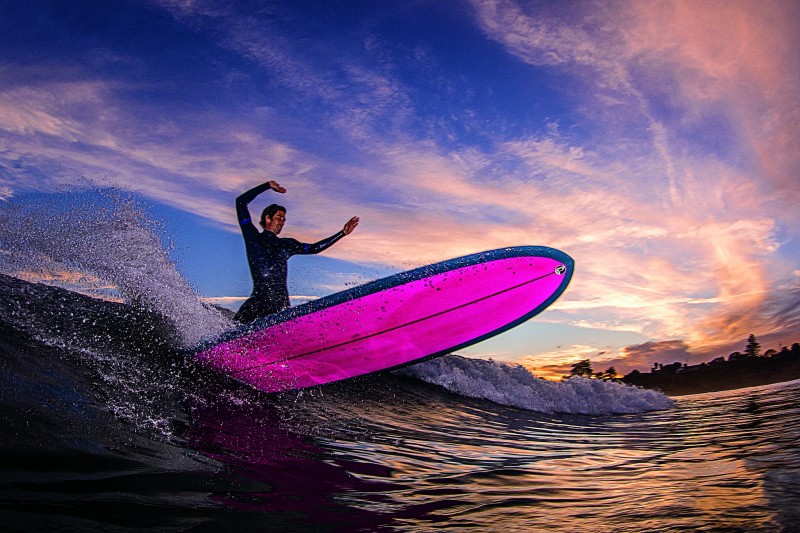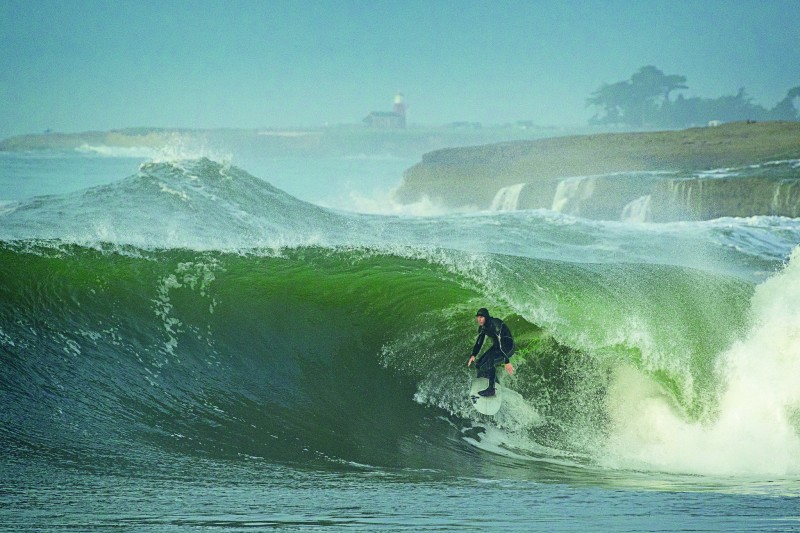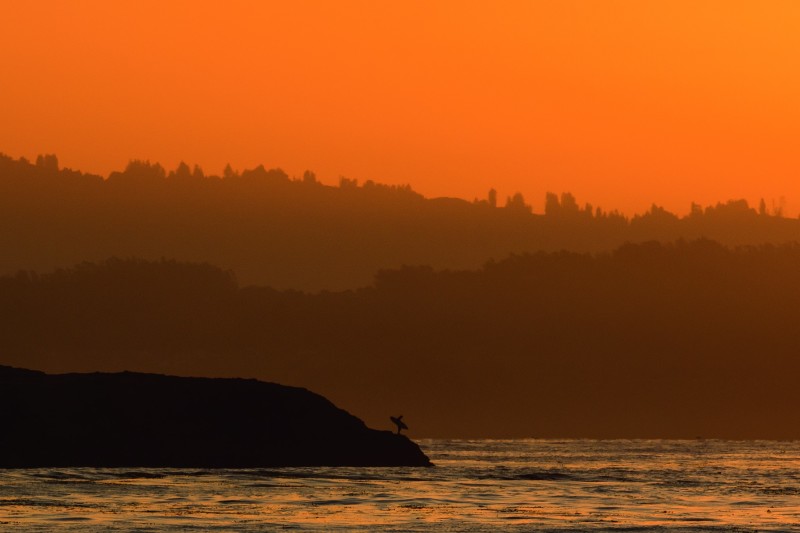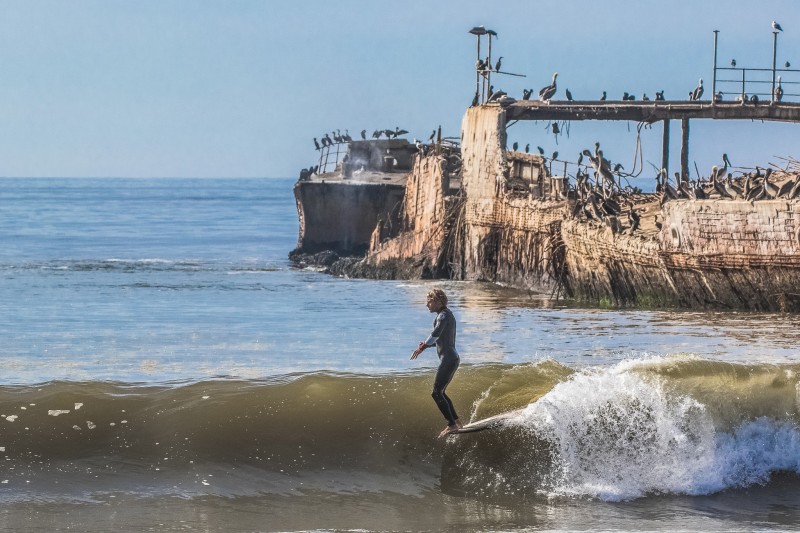Engineering Creativity from Flash to Finish
Originally published in Santa Cruz Waves Magazine.
Out in front of his house on the Eastside of Santa Cruz, Bryan Garrison wraps up a game of frisbee with his kids, 12-year-old Kirra and 10-year-old Kadin, and heads into his backyard. Piles of shells, jars full of sea glass, and art projects in various stages of construction are strewn across the deck. A tree house that Garrison built winds around an old tree, with a rock-climbing wall tacked onto the partition in front.
It’s no surprise, given his imaginative creations, that Garrison started off in the engineering program at San Francisco State University before switching to industrial design. As a student, he saw the dawn of the digital age, borrowing floppy disk cameras from the school to use for his projects. In 1999, after earning his bachelor’s degree, he moved to Santa Cruz, where he founded a landscape company called Dreamscape and put his design background to work.

Darshan Gooch is a favorite subject for many photographers, including Garrison. The guy can pretty much ride anything with style and flow.
Over the past few years, photography has become Garrison’s main focus, and his approach is as dynamic as his skill set. He engineers images from start to finish, capturing iconic moments in the water and on land, and experimenting with unique substrates—like metal, wood, and fiberglass—for his prints. After a tour of his bursting-with-creativity yard, the lensman filled Waves in on his process.
When did you start surfing?
I spent a lot of time bodysurfing and bodyboarding in Ventura as a kid. My dad got me my first surfboard when I was 10 or 12. But surfing was never a mainstream part of my life until I lived in San Francisco and I was working in a snowboard warehouse with a crew that was into surfing. They took me out to the jetty at Half Moon Bay. I remember I thought I was going to die and they were all laughing at me.
How did you get into photography?
I’ve always been attracted to photography. The whole reason I got into surf photography was I wanted to get pictures of Kadin and Kirra surfing. I’ve been down to Baja with my kids a few times. I wanted to get images of them but I could only do it on land or with a GoPro. It was fun for awhile, but I was looking to do more. … Ryan “Chachi” Craig had a flash housing for sale, which I thought looked like a great opportunity. He showed me how to work the whole thing and set it up. We shot some wave photos one evening and he showed me how to use a flash. Talk about getting hooked. It was an unreal feeling.

Jesse Colombo casually sets up for some time behind the curtain.
Have other mentors influenced your photography?
Dave [“Nelly”] Nelson has been really great about sharing information, especially on equipment and on the surf side of things. He’s always open to questions.
Lanny Headrick showed me how to do wood-transfer prints. I’ve been really drawn to that process. It’s kind of like Christmas. You lay your image down on the wood and it has to dry. You don’t really know what you get until you peel the paper away.
I have been working with Craig Jones and Jeff Bettencourt on creating images from my photography and putting them on the faces of the Wave Clock [an app and a physical clock that displays real-time wave height, swell period, and tide data] in a variety of different mediums.
Do you have a favorite technique?
On the surfing level, it has to be flash, because you have such a small window, typically, to work in. The flash only bursts once. That’s where you really have to know your surfer, what they’re going to do and what they’re capable of. You have just that half a second—or whatever it is—to capture that moment.
I don’t like to use tripods that much. I don’t like setting my camera up in one spot and leaving it there. The camera is usually in my hands; I’m walking around and moving. It’s rare that you’ll see me standing in one spot for very long unless there’s a specific angle I’m working on that day.

Garrison doing his best seal imitation.
What are some of your biggest accomplishments as a photographer?
Getting a spread of Kyle Jouras in [the June/July 2016 issue of] Santa Cruz Waves was a proud moment. He and I had been working so hard together for a long time, poking around in those nooks and crannies, finding that backdrop. Getting that [February 2017 surf photography] publication in Blue [a Japanese magazine] came about through Ashley and Alex Thomson. They asked me to shoot that, and I was really stoked to do it.
Do you have anything special lined up for 2017?
My biggest show this year is going to be at Sawyer Land & Sea Supply on April 15. It’s going to be boutique style, which lends [itself] toward the artistic side of what I’m doing. I have prints on metal, but I’m also doing wood transfer prints and stuff on fiberglass.
[I’m also partnering] with JP Garner and Zuey Tleimat from The Huda House to develop my imagery into line art and put it on T-shirts. We launched the KJ shirt this winter and [are] in the works of getting another design out.
I’m trying to put some stuff together with groups of people around town … a couple trips a year, being the photographer. I want to be able to travel, using a photojournalistic approach. It would be great to travel with some great surfers, but going with great people is more important to me.
Is there etiquette to surf photography?
There should be. Last year, when the harbor started breaking, I was just starting surf photography, got excited and posted a few pictures. Luckily, I was told nicely to stop that. [Laughs.] I was grateful for that experience, because it made me look at what I was doing in a different way, and see that there are more people involved than just me. I have a ton of imagery of some really great days just sitting here, waiting for the right time to expose them.
What advice can you offer aspiring photographers on instant gratification?
If you’re shooting some spot that doesn’t break that often, hold on to it. Don’t post it today. It takes away from what I feel is special about this coast. You can surf an hour from Santa Cruz north or south every day. There’s somewhere that’s going to have the right wind, the right swell, the right little nook and cranny. If everyone knows where those little nooks and crannies are every single day of the year, it takes away from the appeal of the search.

A lone surfer prepares to enter the frigid water at Steamer Lane.
